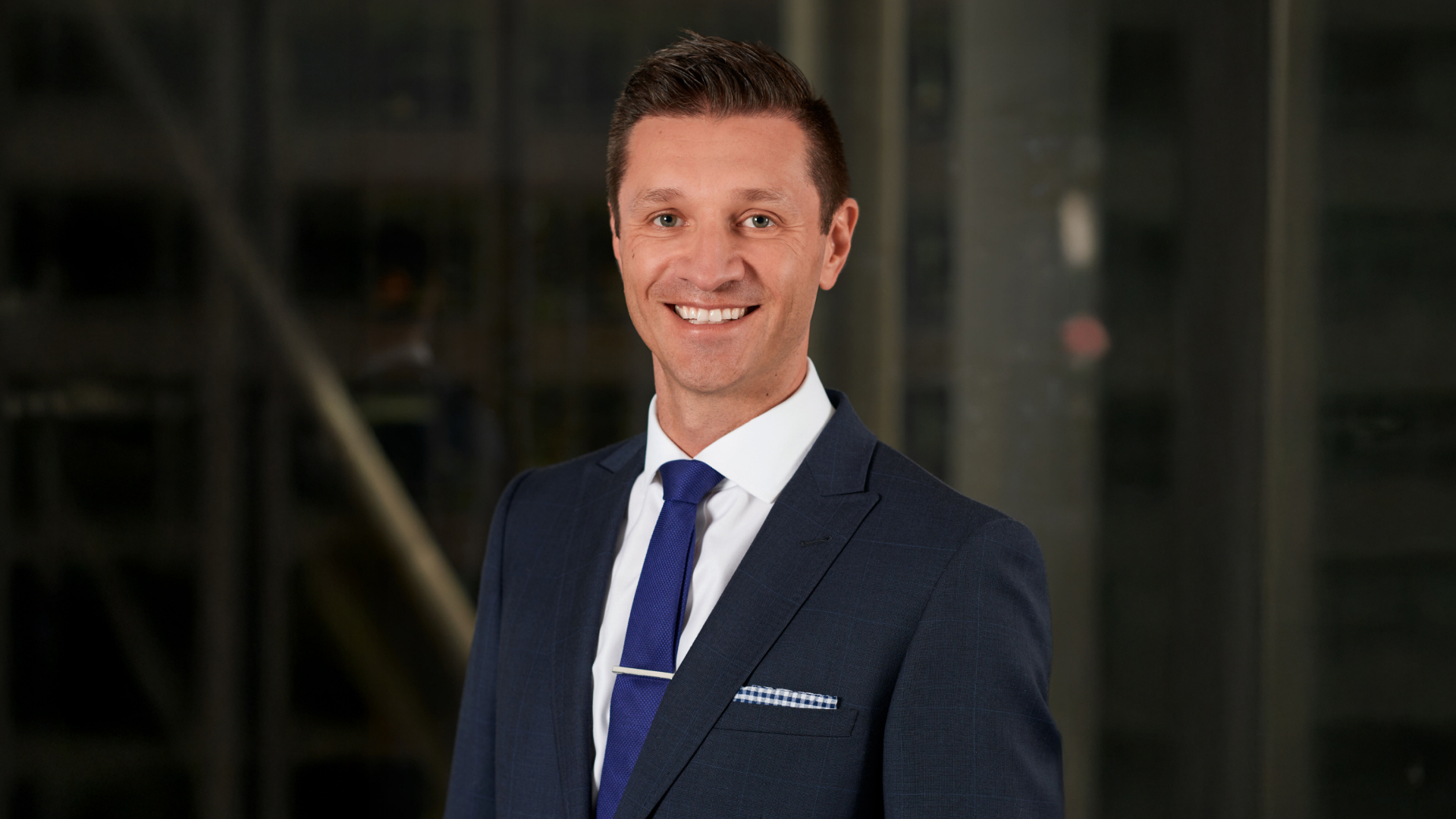The ex-adviser who says Sydney’s next property boom starts in 2026

After nearly 30 years in financial advice, Kiril Ruvinsky has managed multimillion-dollar share portfolios, hunted down 30-bagger micro caps, and built a sizable property portfolio of his own.
But ask him where the next serious money will be made, and he doesn’t hesitate: Sydney property - and it’s about to get another leg up.
“If you’re still waiting for Sydney prices to become affordable again, you could be waiting forever,” he says.
Ruvinsky, formerly Executive Manager of Financial Planning at Westpac (ASX: WBC), went on to establish Strategic Investor Group, a property advisory that has overseen more than 4,000 transactions and specialises in helping clients avoid real estate duds and build generational wealth.
While the broader market narrative has shifted toward hotter growth cities like Brisbane and Perth, he’s convinced that well-targeted purchases in Sydney still offer the best opportunity for long-term returns.
From adviser’s desk to buyer’s agent playbook
Ruvinsky spent 29 years as a licensed financial adviser, steeped in portfolio construction, retirement modelling, and risk management. He advised on equities, fixed income, and alternative assets - but when he looked at his own balance sheet, the standout performer wasn’t his share portfolio.
“When I spoke to other advisers over coffee and asked how they’d built their wealth, 95% said property,” he says. “Yet many were still pushing equities to clients, because that’s how they get paid.”
Seeing his clients make costly mistakes - from buying off-plan in poor locations to chasing short-term yields - revealed a gap he felt he could fill. A decade ago, he launched a buyer’s agency to help investors pinpoint high-growth areas and invest with a long-term perspective.
Today, he still runs both sides of the ledger: a concentrated micro-cap portfolio for asymmetric upside, and a Sydney-focused property portfolio for scalable, tax-efficient wealth.
January 1, 2026: The day Sydney’s property market changes
On New Year’s Day, the Federal Government will remove income caps for Sydney buyers under the First Home Buyer Guarantee - a scheme that lets eligible purchasers buy with just a 5% deposit and no lenders mortgage insurance (LMI).
Right now, high-income earners are locked out. For example:
- Today — To buy a $1.5 million home without LMI, you need a 20% deposit ($300,000).
- From January 1 — You could secure the same property with just $75,000.
That’s a $225,000 barrier gone overnight, unleashing pent-up demand from well-paid professionals - tech engineers, finance executives, medical specialists - who are currently priced out of the market.
“This isn’t about struggling first-home buyers anymore,” he says. “It’s going to put high-income earners in direct competition with every other buyer in that price bracket, and it will push prices right up the ladder.”
The backdrop makes it even more combustible:
- Net overseas migration hit a record 624,100 in the year to March 2024 and is still tracking near 500,000 annually. Ruvinsky pointed out that on a per capita basis, Australia takes in more immigrants than any other country.
- NSW is forecast to miss its housing targets by 190,000 homes by 2029.
- Vacancy rates are below 1.2%, with tenants often offering 12 months’ rent upfront to secure a roof over their heads.
- Rents in key Sydney LGAs are rising 10–15% annually due to the housing shortage.
- The RBA, which just cut rates, will add fuel to the fire if predictions of 2-3 further reductions materialise.
“This isn’t speculative, immigration-fuelled growth. It’s a system that can’t build fast enough… for a city the world wants to live in. Sydney isn’t just expensive. It’s becoming exclusive," he says.
Why not chase cheaper markets?
Perth, Adelaide and Brisbane might look tempting with higher yields and lower prices.
But here, Ruvinsky offers a lesson that may resonate with income-focused investors who know what it's like to see growth stocks race ahead in a total return context.
"High yield doesn’t equal high growth. High yields usually come from low land values,” he says.
In his view, Sydney’s long-term fundamentals eclipse the rest:
- Income power — Median household incomes in many inner Sydney LGAs exceed $120,000, lifting borrowing capacity and price ceilings.
- Infrastructure and jobs — Sydney attracts the lion’s share of infrastructure funding, global employers, and high-skill migrants.
- Scarcity — The ocean, national parks, and planning restrictions mean there’s no more land to release. “You can’t sprawl your way out of this,” he says.
- Structural vs cyclical — “Brisbane and Perth were boosted by affordability and interstate FOMO. That wave is already receding. Clearance rates are falling. Listings are rising.”
He’s also seen who’s been driving recent price surges elsewhere: “Buyers’ agents from Sydney. Locals aren’t pushing up those markets - we are.”
Where he’s buying now: Campsie and Penrith
When asked for two current favourite areas of Sydney, he nominates one apartment market and one house-and-land play.
- Campsie (for apartments) — A “before it’s hot” bet on the Sydney Metro, cutting commutes to Town Hall from 43 to 20 minutes, with trains every four minutes at peak. Rezoning under Transport Oriented Development rules will allow denser builds near stations. “You’ll see developers knocking on doors. We’re very specific about which pockets we buy in - targeting boutique, character-rich blocks of no more than 4–6 units, with high land value and bought below replacement cost. The fundamentals here are strong.”
Penrith (for detached houses) — Once overlooked, now a lifestyle and land-value story, with trendy new venues such as Theo's Rooftop, riverside precinct upgrades, and heavy infrastructure spend. “Clients are buying where 70–90% of the value is in the land, below replacement cost. It’s how you get the 10x, 12x outcomes," he says.
Both, he says, have “ugly duckling” appeal - suburbs once dismissed that transform into high-demand postcodes. Marrickville, Dulwich Hill, and Alexandria all followed that arc.
A Ponzi scheme? Look at the facts
In recent real estate articles, some bearish Livewire readers have dismissed the Sydney market as an “immigration-fuelled Ponzi scheme.” Ruvinsky sees it differently.
He points out that:
- Immigration is essential to replace Australia’s ageing population and sustain the tax base.
- Sydney consistently ranks among the world’s most liveable cities.
- The city attracts global capital and major corporate investment, hosting the lion’s share of multinational headquarters in Australia, which supports high-wage jobs.
- Overseas workers help fill critical skills shortages in sectors such as healthcare and construction.
"Sydney is backed by income, demand, scarcity, and utility. When a Google engineer spends $3.5 million on a terrace, they’re not flipping it - they’re building intergenerational wealth. Buy the right Sydney asset and never sell, and compounding will do the rest," says Ruvinsky.
“I’d call it the best wealth engine in the country."
Over to you
Do you agree with Ruvinsky? Let us know in the comments below!
2 topics

